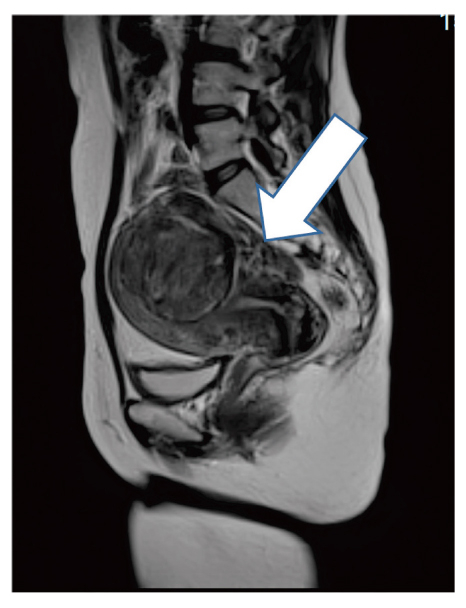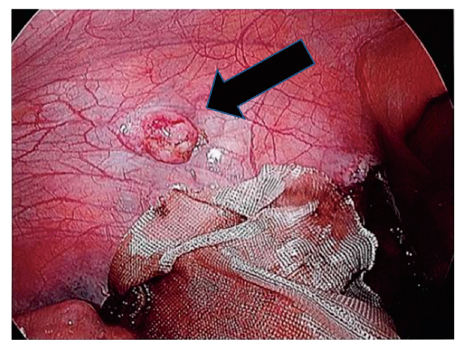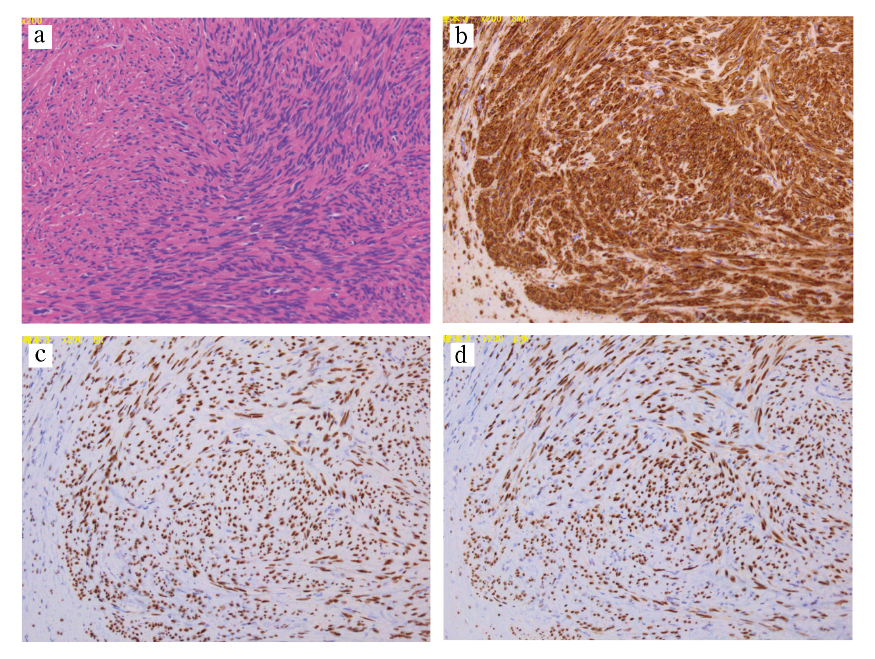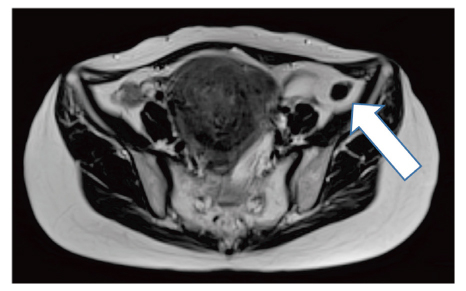Parasitic myoma (PM) is a rare disease in which multiple leiomyomas are intraperitoneally formed. Recently, an increasing number of cases due to specimen morcellation during minimally invasive surgery has been reported. We present the first case of a PM identified intraoperatively during laparoscopic hysterectomy. A 40-year-old Japanese multiparous woman presented to our hospital with heavy menstrual bleeding. She had no history of previous surgery. Magnetic resonance imaging showed uterine myomas. As the patient did not wish for further pregnancy, she underwent oral gonadotropin-releasing hormone antagonist therapy followed by a total laparoscopic hysterectomy. Intraoperatively, we identified a thumb-sized tumor on the left side of the peritoneum. Histopathological examination showed evidence of benign leiomyoma.
Abstract/References
A case of spontaneous parasitic myoma in a patient without a history of myomectomy treated laparoscopically
Hyo Kyozuka, Toki Jin, Misa Sugeno, Katsunori Kuratsune, Hiroki Ando, Fumihiro Ito, Hajime Odajima, Daisuke Suzuki, Yasuhisa Nomura
-
Hyo Kyozuka
Department of Obstetrics and Gynecology, Ohta nisinouchi Hospital
-
Toki Jin
Department of Obstetrics and Gynecology, Ohta nisinouchi Hospital
-
Misa Sugeno
Department of Obstetrics and Gynecology, Ohta nisinouchi Hospital
-
Katsunori Kuratsune
Department of Obstetrics and Gynecology, Ohta nisinouchi Hospital
Department of Obstetrics and Gynecology, School of Medicine, University of Occupational and Environmental Health
-
Hiroki Ando
Department of Obstetrics and Gynecology, Ohta nisinouchi Hospital
-
Fumihiro Ito
Department of Obstetrics and Gynecology, Ohta nisinouchi Hospital
-
Hajime Odajima
Department of Obstetrics and Pathology, Ohta nisinouchi Hospital
-
Daisuke Suzuki
Department of Obstetrics and Gynecology, Ohta nisinouchi Hospital
-
Yasuhisa Nomura
Department of Obstetrics and Gynecology, Ohta nisinouchi Hospital
Abstract
References
1. Murata T, Kyozuka H, Endo Y, et al. Preterm deliveries in women with uterine myomas:The Japan environment and children’s study. Int J Environ Res Public Health, 18:2246, 2021.
2. D’Silva EC, Muda AM, Safiee AI, Ghazali WAHW. Five-Year Lapsed:Review of Laparoscopic Myomectomy versus Open Myomectomy in Putrajaya Hospital. Gynecol Minim Invasive Ther, 7:161-166, 2018.
5. Li PC, Lee MH, Wei YC, Hsu YH, Hong MK. Iatrogenic parasitic myoma with two recurrence times after subsequent myomectomy:A rare and complicated case report. Gynecol Minim Invasive Ther, 9:154-158, 2020.
7. Vaquero ME, Magrina JF, Leslie KO. Uterine smooth-muscle tumors with unusual growth patterns. J Minim Invasive Gynecol, 16:263-268, 2009.
8. Dalainas I. Vascular smooth muscle tumors:review of the literature. Int J Surg, 6:157-163, 2008.
10. Canzonieri V, D’Amore ES, Bartoloni G, Piazza M, Blandamura S, Carbone A. Leiomyomatosis with vascular invasion:a unified pathogenesis regarding leiomyoma with vascular microinvasion, benign metastasizing leiomyoma and intravenous leiomyomatosis. Virchows Arch, 425:541-545, 1994.
13. van Papendrecht HH, Gratama S. Leiomyomatosis peritonealis disseminata. Eur J Obstet Gynecol Reprod Biol, 14:251-259, 1983.
14. Heinig J, Neff A, Cirkel U, Klockenbusch W. Recurrent leiomyomatosis peritonealis disseminata after hysterectomy and bilateral salpingo-oophorectomy during combined hormone replacement therapy. Eur J Obstet Gynecol Reprod Biol, 111:216-218, 2003.
15. Bristow RE, Montz FJ. Leiomyomatosis peritonealis disseminata and ovarian Brenner tumor associated with tamoxifen use. Int J Gynecol Cancer, 11:312-315, 2001.
16. Deering S, Miller B, Kopelman JN, Reed M. Recurrent leiomyomatosis peritonealis disseminata exacerbated by in vitro fertilization. Am J Obstet Gynecol, 182:725-726, 2000.
Figures (4)




